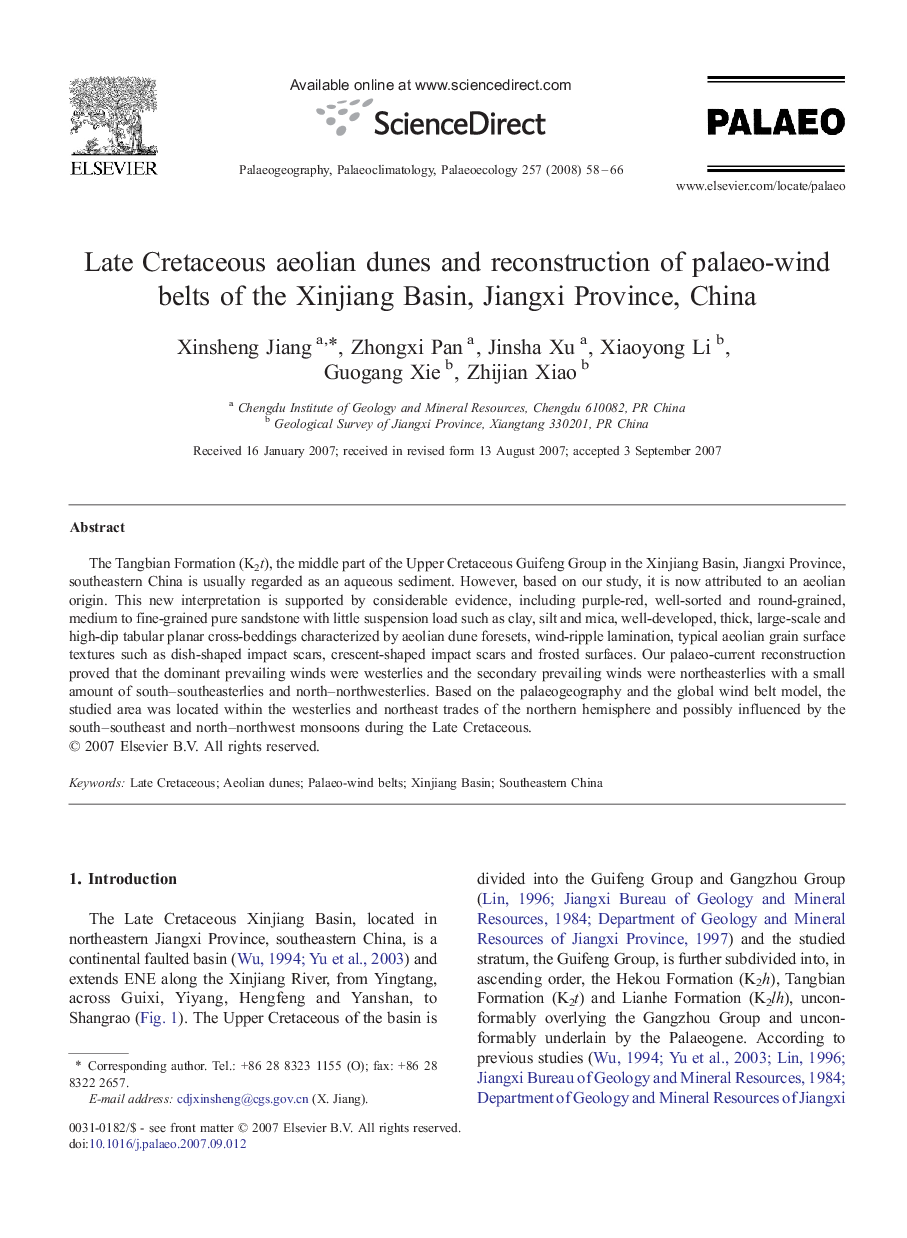| Article ID | Journal | Published Year | Pages | File Type |
|---|---|---|---|---|
| 4468855 | Palaeogeography, Palaeoclimatology, Palaeoecology | 2008 | 9 Pages |
The Tangbian Formation (K2t), the middle part of the Upper Cretaceous Guifeng Group in the Xinjiang Basin, Jiangxi Province, southeastern China is usually regarded as an aqueous sediment. However, based on our study, it is now attributed to an aeolian origin. This new interpretation is supported by considerable evidence, including purple-red, well-sorted and round-grained, medium to fine-grained pure sandstone with little suspension load such as clay, silt and mica, well-developed, thick, large-scale and high-dip tabular planar cross-beddings characterized by aeolian dune foresets, wind-ripple lamination, typical aeolian grain surface textures such as dish-shaped impact scars, crescent-shaped impact scars and frosted surfaces. Our palaeo-current reconstruction proved that the dominant prevailing winds were westerlies and the secondary prevailing winds were northeasterlies with a small amount of south–southeasterlies and north–northwesterlies. Based on the palaeogeography and the global wind belt model, the studied area was located within the westerlies and northeast trades of the northern hemisphere and possibly influenced by the south–southeast and north–northwest monsoons during the Late Cretaceous.
